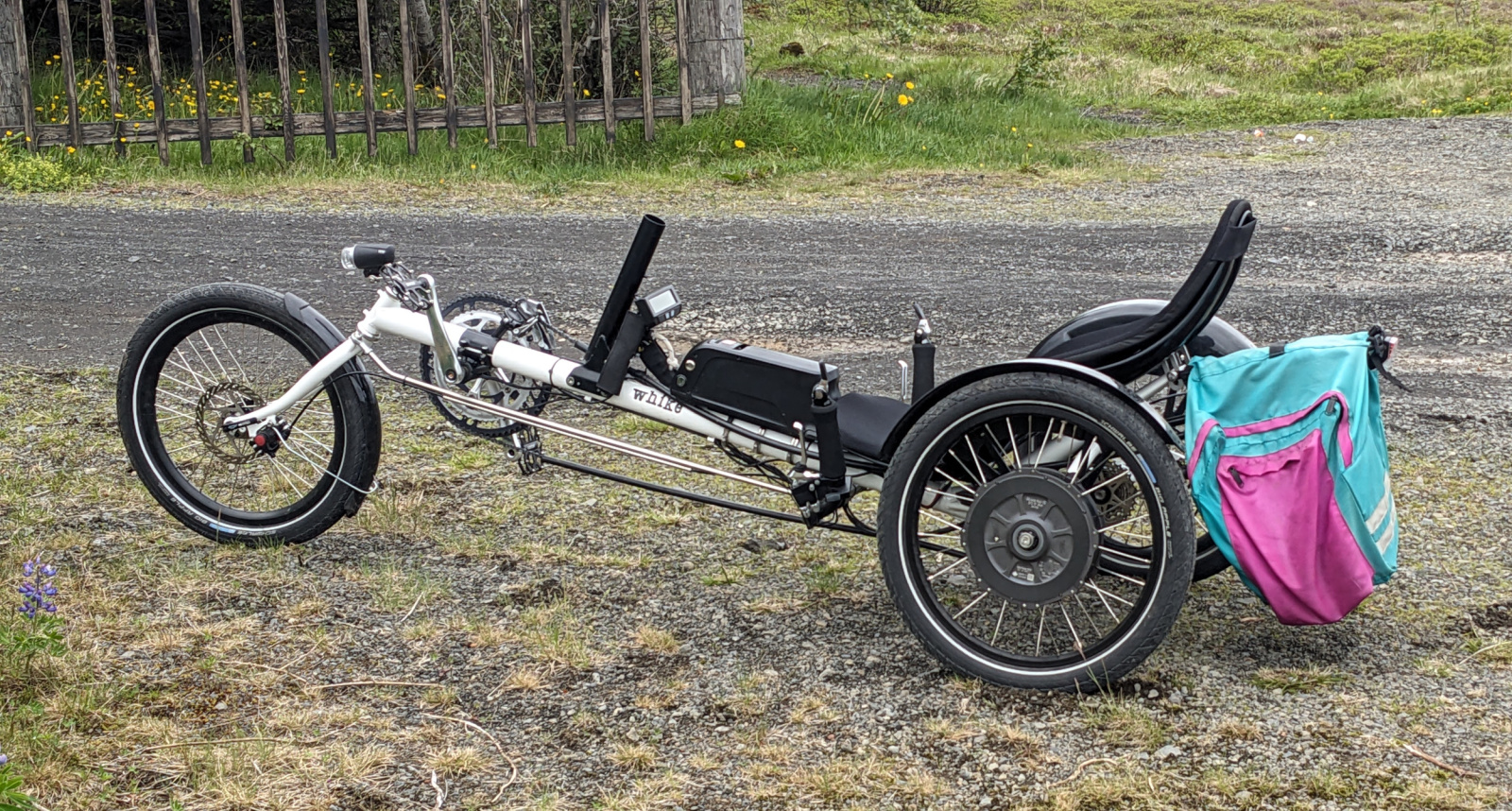Whike with a Grin
Iceland
|
383
Published: 2024-06-29
This is a recumbent trike specifically made to combine the principles of sailing and cycling. (https://whike.com/) In good wind it's fun, fast and frankly sometimes frightening. In town it is also as impractical as it looks, which is why I use it more often without the sail. It has been described on related online forum as only a "beach toy," but with Grin's All-Axle motor I find myself choosing the trike over my regular ebike whenever the journey follows safe cycle paths. That includes my daily commute :)
Single-sided drivetrain
The chain drives the right wheel on this trike, which has never been an issue except on icy paths. The hub motor has been installed on the left side where before it was a free wheel. The imbalance in power is noticeable, but not such that it feels like you need to fight it with steering. With the torque sensor it is also possible to set the PAS to match motor power on the left side with the pedaling power in the right side.
Applying the ebrake fully however, it will start to turn left at lower speeds if for some reason a hand is not on the handlebar.
The wheels are 20" in diameter and I chose the standard winding for the motor. Currently it is equipped with a 36V battery in an unpleasant location. Finding a better placement and mounting method for a battery is unsolved for the time being.
Speaking of ebrake, this has been the most surprising thing about this excellent kit. I chose this motor because of the ability to be mounted on a side and only later understood that it can regenerate energy while braking. This brake is much smoother and quieter than the disc brakes and back-pedaling to vary the intensity feels natural. There is also a tripwire cutoff switch on the left handlebar brake lever, but I find it less useful as a brake and use it more to temporarily disable motor power. For example to switch to lower gears without the PAS sensor triggering motor power.
If anybody is wondering if it is possible to charge the battery while using the sail, that is theoretically possible but in my experience you will need to trade a lot of speed for charging power.
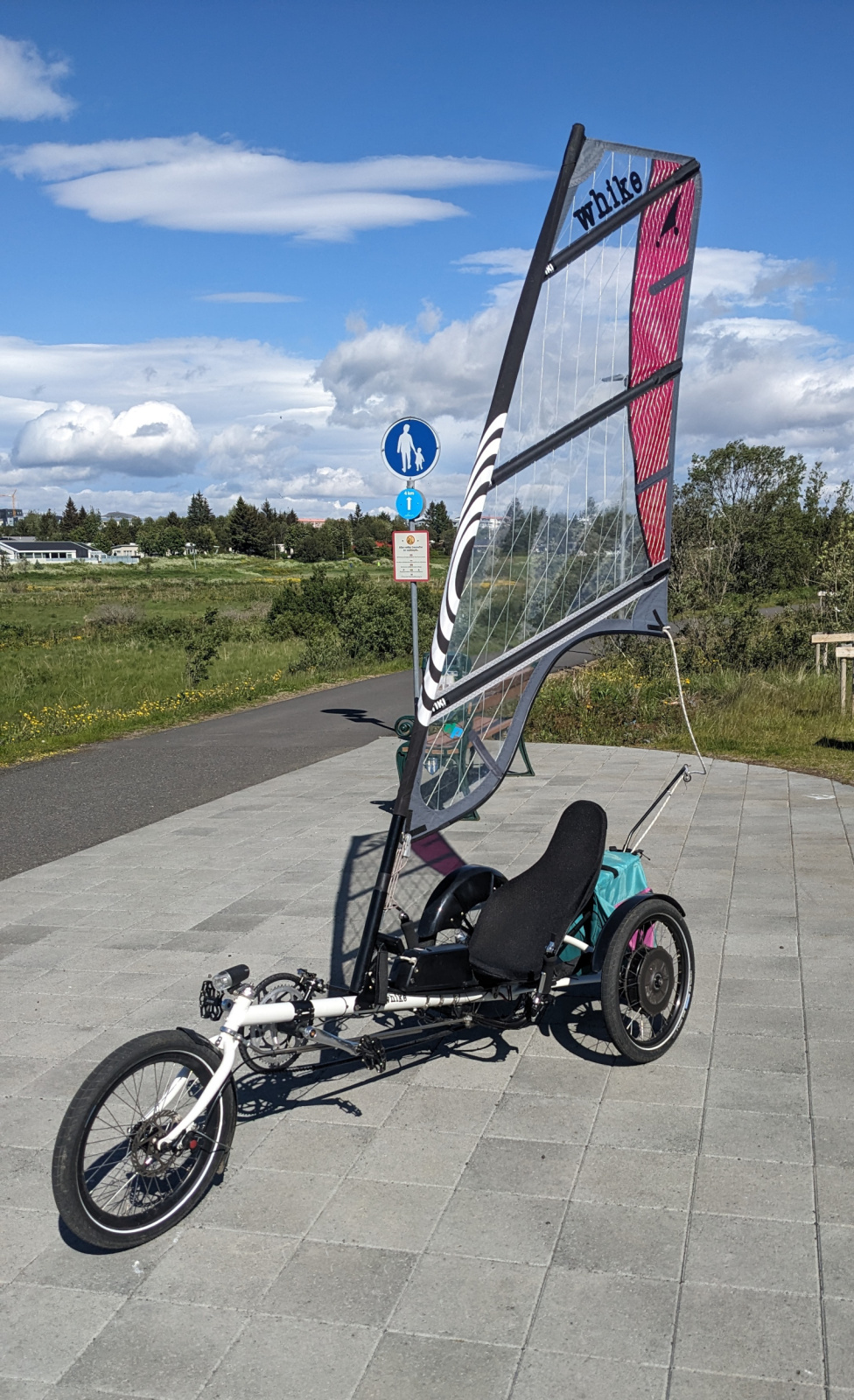
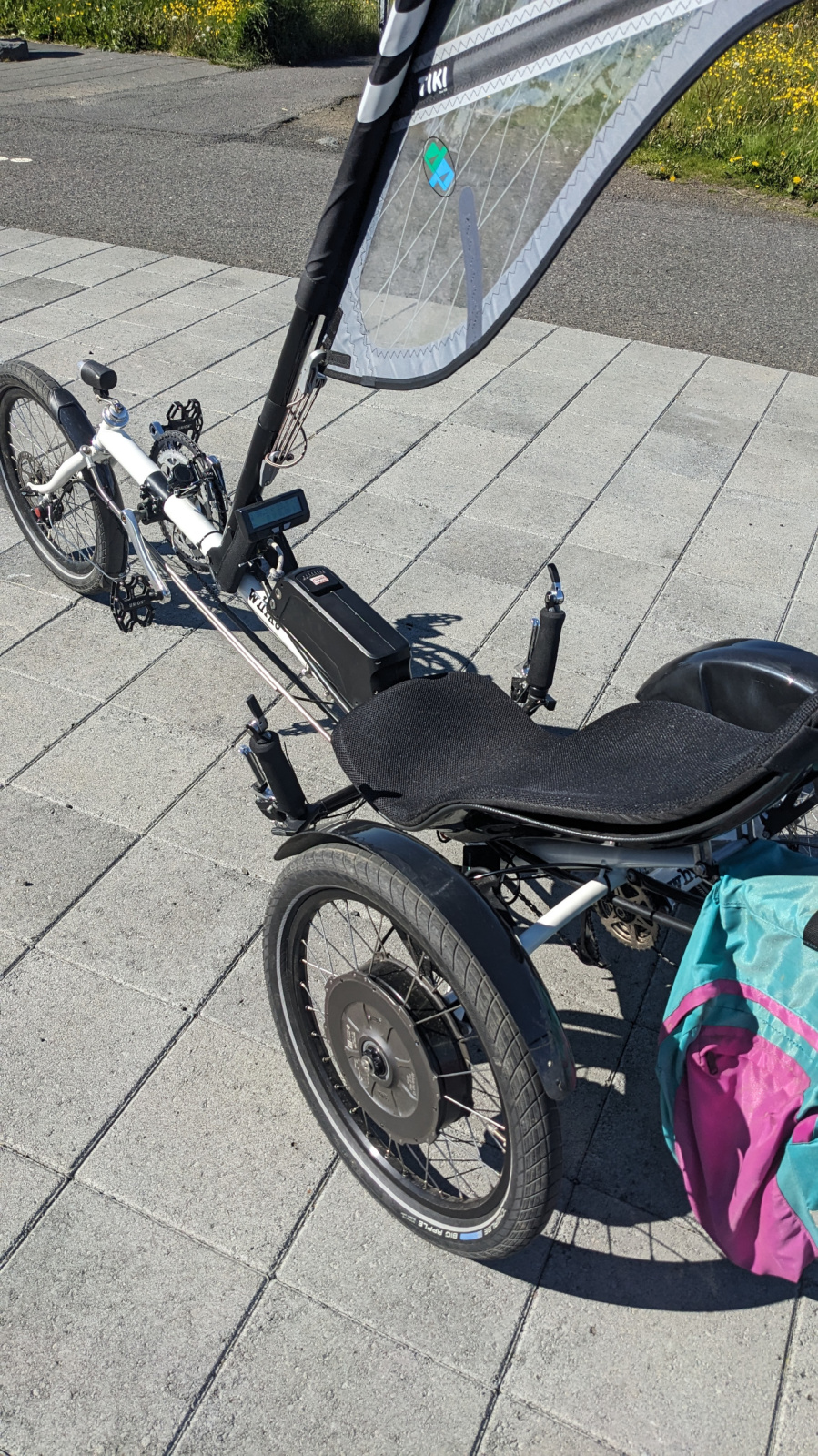
Mounting the motor
The side-axle on the whike extends about 74mm from a rather large base. It has sections of various diameters, 12mm at the end which receives an M8 screw to hold the wheel in to the base. The longest section of the axle is just under 15mm in diameter. These need to be widened to 16mm to hold the motor securely and my idea was to use steel tubing material for that purpose, and also to extend the axle to the full length of then motor axle. At this point I got in touch with support just to see what they though of this and they told me it sounds good and that the axle does not really need to be extended, as long as it's held down securely towards the side of the trike. So I ordered a single-side build of Grin's All-Axle V3 motor with Catrike single side torque adapter which would fit according to measurements of the disc caliper mounts on the trike.
At least it would fit in the plane perpendicular to the axle. At this point I had not started thinking about how things would fit along the axle, if the motor would be touching the base or stop somewhere along it.
While waiting for the motor to arrive, the supplier with a thin (16mm outer diameter and 15 inner is a tube with 0.5mm wall thickness) steel tube that I had found let me know they cannot ship my location due to "export laws". The local suppliers do not stock this, but I decided to at least visit one of them to ask in person. They gave me a short piece of tubing that would fit over the outer most part of the axle, 12mm in inner diameter and 16mm outer. It was something, and in the end saved me a lot of money.
When the motor arrived I was pleased to see that, after some filing, the small steel tube fit the motor and over the axle very snug and the catrike adapter fits perfectly. However, once seated and pushed towards the bike, the trike axle does not stop the motor before crushing the motor cable. This was solved with a couple of large washers between the base and the motor. With a steel saw I cut out a part of the washers where the motor cable would sit. Now the motor can be fastened to the side of the trike, and it seemed very sturdy, despite only two contact points between the trike and the motor, my cheap steel tube at the end of the axle and the washers.
A friend if mine printed out tubes using a 3D printer which fills up the rest of the space around the axle. How much compression this plastic experiences I can only guess, not much. The last time I checked it's still there without any signs of wear.
The torque adapter does not reach the disc brake mounting plate. I solved this by using longer screws, a bolt and two washers between them. Due to the back-and-forth forces this part experiences, I check on it regularly for any signs of loosening. So far this has not happened, but if it does it will need further work.
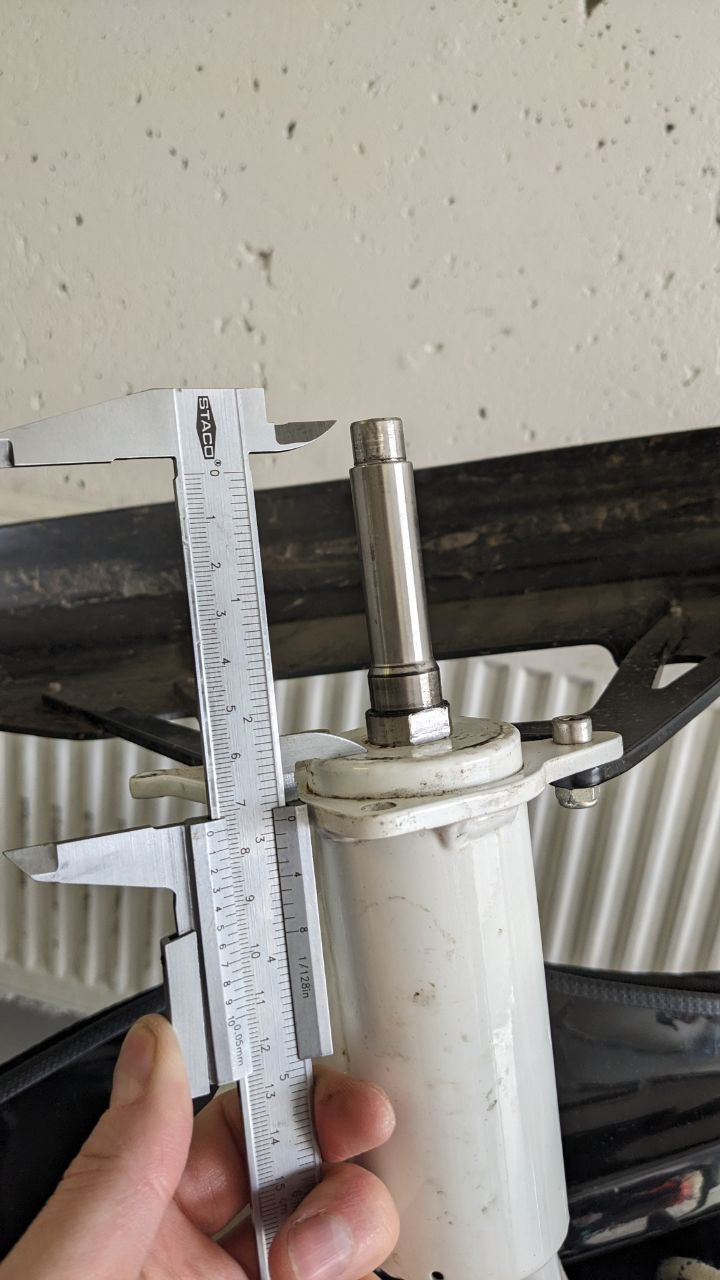
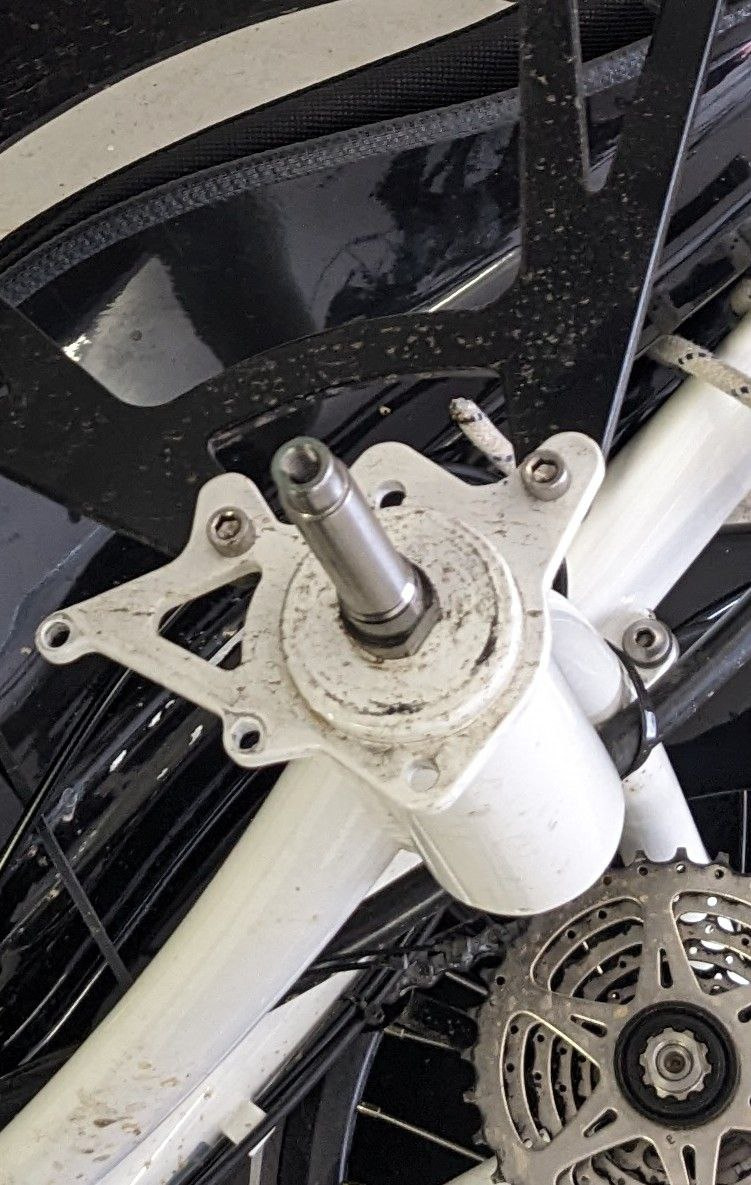
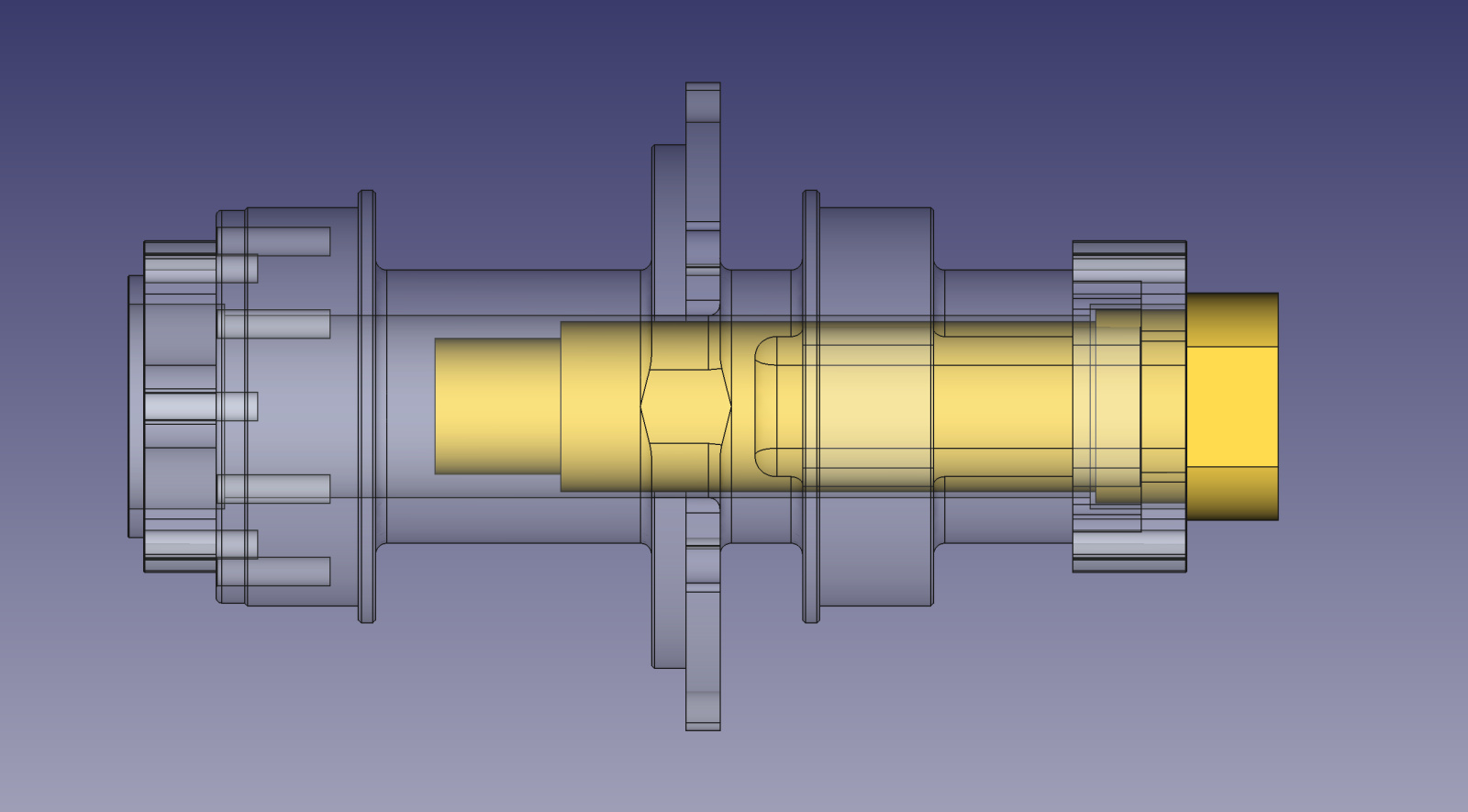
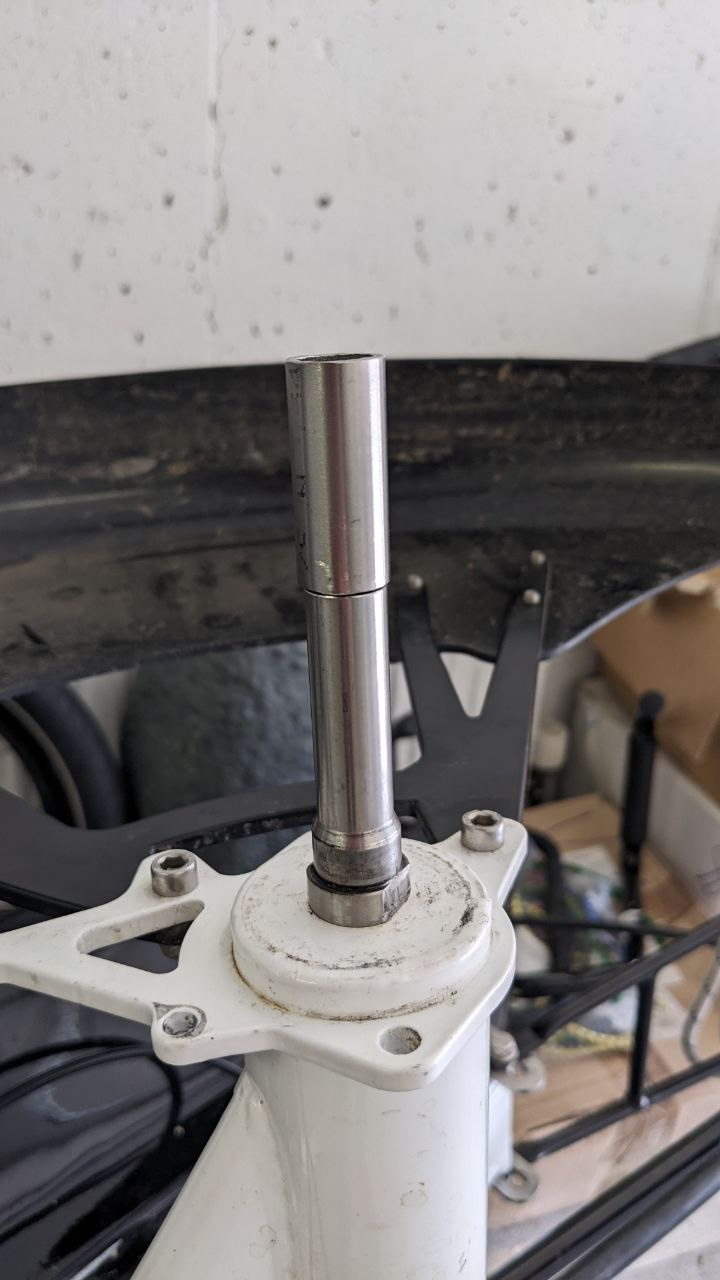

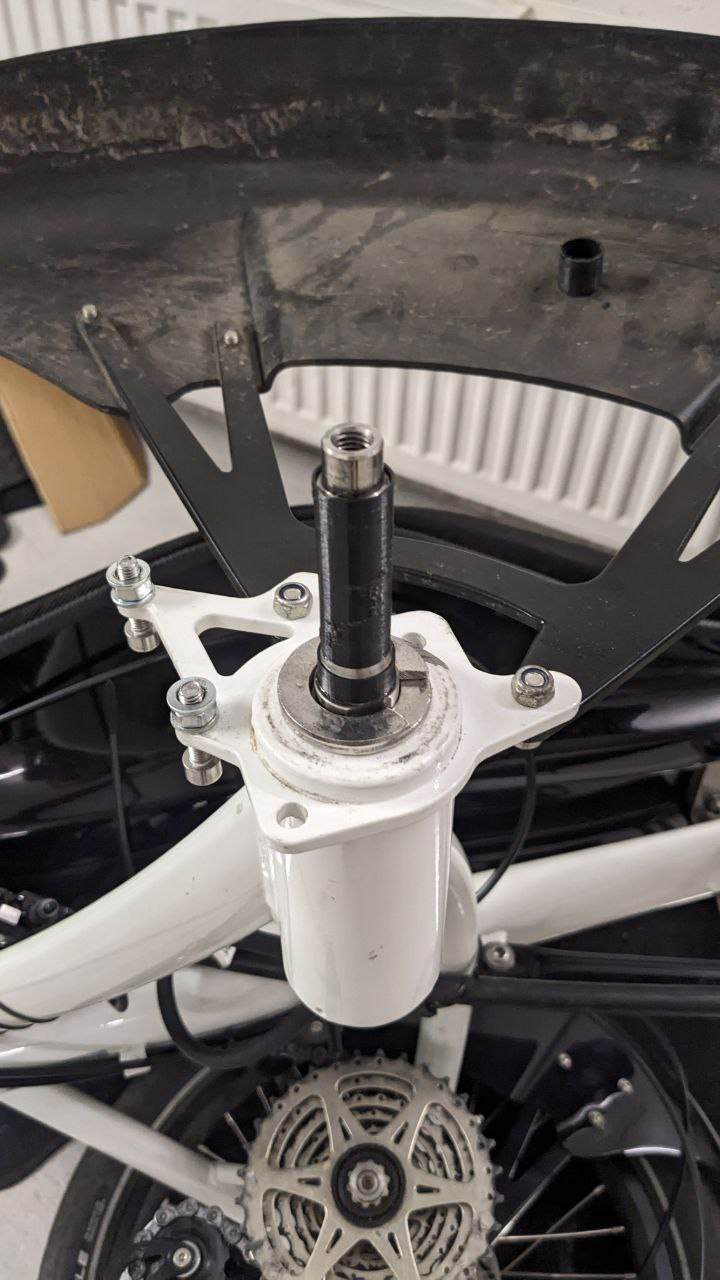



 Canadian
Canadian
